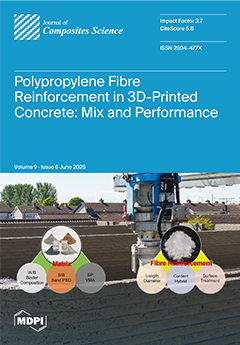In recent days, aluminum-based hybrid composites have garnered more interest than monolithic alloys owing to their remarkable properties, encompassing a high strength-to-weight ratio, excellent corrosion resistance, and impressive wear durability. The present study attempts to optimize the multiple wear attribute characteristics of Al6061/SiC/Al
[...] Read more.
In recent days, aluminum-based hybrid composites have garnered more interest than monolithic alloys owing to their remarkable properties, encompassing a high strength-to-weight ratio, excellent corrosion resistance, and impressive wear durability. The present study attempts to optimize the multiple wear attribute characteristics of Al6061/SiC/Al
2O
3 hybrid composites using grey and entropy-based VIKOR techniques. The composites were produced by adding equal proportions of SiC/Al
2O
3 (0–12 wt.%) ceramics through the stir-casting process, using an ultrasonication setup. Dry sliding wear experiments were executed with tribometer variants, namely reinforcement content (wt.%), load (N), sliding velocity (v), and sliding distance (SD), following L
27 OA. The optimal combination of process variables for achieving high GRG values from grey analysis was found to be A
3-B
3-C
3-D
3. The S/N ratios and ANOVA results for GRG indicated that RF content (wt.%) is the predominant component determining multiple outcomes, followed by sliding distance, load, and sliding velocity. The multi-order regression model formulated for the VIKOR index (Q
i) displayed high significance and more accuracy, with a variance of 0.0216 and a coefficient of determination (R
2), and adjusted R
2 values of 99.60% and 99.14%. Subsequent morphological studies indicated that plowing, abrasion, and adhesion mechanisms are the dominant modes of wear.
Full article





